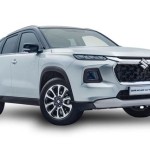A row house floor plan is a conceptual blueprint that outlines the layout and design of the interior of a row house, a type of terraced housing in which multiple dwellings are attached to each other in a linear arrangement. These floor plans serve as detailed representations of the various levels and rooms within the house, providing insights into the spatial arrangement, room relationships, and functional flow.
Row house floor plans are essential for architects, builders, and homeowners alike. They serve as a roadmap for the construction and renovation process, ensuring that the finished product aligns with the intended design. For potential buyers, floor plans offer a valuable preview of the property’s layout and configuration, allowing them to assess its suitability and make informed decisions.
In the following sections, we will delve into the key elements and variations of row house floor plans, exploring the different designs, room arrangements, and architectural considerations that shape these unique living spaces.
Row house floor plans offer a unique blend of urban living and spatial efficiency. Here are nine important points to consider:
- Compact and efficient design
- Shared walls for structural support
- Linear arrangement of rooms
- Varied floor plan layouts
- Vertical space utilization
- Natural light access
- Privacy and community balance
- Cost-effective construction
- Historical and architectural significance
These elements contribute to the unique character and functionality of row house floor plans, making them an attractive option for urban dwellers seeking a blend of affordability, convenience, and community living.
Compact and efficient design
Row house floor plans are renowned for their compact and efficient design, which maximizes space utilization within the often narrow confines of urban lots. This efficiency is achieved through several key strategies:
Vertical space utilization: Row houses typically have multiple stories, which allows for a greater number of rooms and living spaces within a limited footprint. This vertical arrangement also creates opportunities for lofts, mezzanines, and other creative ways to add extra space and functionality.
Shared walls: Row houses share walls with their neighboring units, eliminating the need for exterior walls on those sides. This shared structure not only saves space but also reduces construction costs and improves energy efficiency.
Linear arrangement of rooms: Row house floor plans typically feature a linear arrangement of rooms, with rooms positioned one behind the other. This layout minimizes wasted space and creates a natural flow of movement through the house.
Compact room sizes: Rooms in row houses are often more compact than in other types of housing, but this compactness is carefully planned to ensure that each space is functional and comfortable. Built-in storage solutions, such as closets and shelves, are often incorporated to maximize storage capacity without sacrificing living space.
The compact and efficient design of row house floor plans makes them an ideal choice for urban dwellers seeking a combination of affordability, functionality, and space optimization.
Shared walls for structural support
In a row house floor plan, the shared walls between adjacent units play a crucial structural role. These walls are typically load-bearing, meaning they bear the weight of the building above. This shared structural support system provides several advantages:
Enhanced stability: The shared walls act as a continuous vertical support structure, distributing the weight of the building evenly across the entire row. This enhances the overall stability of the structure, reducing the risk of collapse or damage during earthquakes or other seismic events.
Lateral support: The shared walls also provide lateral support, resisting forces that act perpendicular to the walls, such as wind loads. This lateral stability is particularly important in taller row houses, where wind forces can be significant.
Fire resistance: Shared walls made of fire-resistant materials, such as brick or concrete, can help to prevent the spread of fire between adjacent units. This added fire protection enhances the safety of the occupants in the event of a fire.
Sound insulation: Shared walls can also act as sound barriers, reducing noise transmission between units. This is especially important in urban environments where noise levels can be high. The thickness and density of the shared walls influence their sound insulation properties.
The shared walls in a row house floor plan are not only structural elements but also contribute to the overall livability and safety of the building. They provide stability, fire resistance, sound insulation, and lateral support, making row houses a durable and resilient housing option.
Linear arrangement of rooms
Row house floor plans typically feature a linear arrangement of rooms, with rooms positioned one behind the other. This layout offers several advantages:
Efficient space utilization: A linear arrangement of rooms minimizes wasted space and creates a natural flow of movement through the house. Rooms can be accessed directly from a central hallway or corridor, eliminating the need for unnecessary hallways or foyers.
Natural light access: The linear arrangement of rooms allows for ample natural light to penetrate the interior of the house. Windows and doors can be strategically placed to maximize daylighting, reducing the need for artificial lighting and creating a brighter and more inviting living environment.
Privacy and separation: The linear arrangement of rooms provides a sense of privacy and separation between different areas of the house. Bedrooms and private spaces can be located at the back of the house, away from the more public areas, such as the living room and kitchen.
Flexibility and adaptability: The linear arrangement of rooms offers flexibility and adaptability in terms of furniture placement and room usage. Rooms can be easily reconfigured to accommodate changing needs and preferences, without major structural alterations.
Overall, the linear arrangement of rooms in a row house floor plan contributes to efficient space utilization, natural light access, privacy, and adaptability, making it a functional and livable layout for urban dwellers.
Varied floor plan layouts
Row house floor plans offer a diverse range of layouts that cater to different needs and preferences. These layouts can vary in terms of the number of stories, the arrangement of rooms, and the presence of specific features, such as outdoor spaces or home offices.
- Single-story row houses: These floor plans feature all living spaces on a single level, making them ideal for individuals or families who prefer a more compact and accessible layout. Single-story row houses often have a linear arrangement of rooms, with the living room, kitchen, and bedrooms one behind the other.
- Two-story row houses: These floor plans offer more vertical space and typically have a more traditional layout. The first floor often consists of public areas, such as the living room, dining room, and kitchen, while the second floor houses the bedrooms and bathrooms. Two-story row houses may also feature a basement or attic that can be utilized for additional storage or living space.
- Multi-story row houses: These floor plans have three or more stories and offer the most spacious and versatile layouts. They often include multiple bedrooms, bathrooms, and living areas, as well as the potential for zustzlichen amenities, such as a home office, media room, or roof terrace. Multi-story row houses are well-suited for larger families or individuals who require more space and flexibility in their living arrangements.
- Townhouse floor plans: Townhouse floor plans are a variation of row house floor plans that typically feature a wider frontage and a more spacious layout. They often have multiple stories and include features such as a private backyard or patio. Townhouse floor plans offer a blend of the privacy and space of a single-family home with the convenience and affordability of a row house.
The varied floor plan layouts of row houses provide buyers and renters with a range of options to choose from, allowing them to find a home that best suits their lifestyle, space requirements, and budget.
Vertical space utilization
Vertical space utilization is a key consideration in row house floor plans, as it allows for the maximization of living space within a limited footprint. Row houses typically have multiple stories, which provides opportunities to create additional rooms, mezzanines, and lofts.
- Multiple stories: Row houses typically have two or more stories, which allows for a greater number of rooms and living spaces within a limited footprint. This vertical arrangement is particularly advantageous in urban areas where land is scarce and expensive.
- Mezzanines: Mezzanines are intermediate floors that are inserted between the main floors of a row house. They are often used to create additional living space, such as a home office, library, or guest room. Mezzanines can also be used to create a sense of visual interest and architectural drama within the home.
- Lofts: Lofts are open and airy spaces that are typically located on the top floor of a row house. They can be used as additional bedrooms, living areas, or studios. Lofts often feature high ceilings and large windows, which create a bright and spacious feel.
- Roof terraces: Some row houses have roof terraces that provide outdoor living space and panoramic views of the surrounding area. Roof terraces can be used for relaxation, entertaining, or gardening.
By utilizing vertical space effectively, row house floor plans can create spacious and functional living environments that meet the needs of urban dwellers.
Natural light access
Natural light access is a crucial consideration in row house floor plan design, as it significantly impacts the livability, comfort, and overall well-being of the occupants. Row houses, by their nature, have limited access to natural light from two sides due to their attached structure. However, careful planning and design strategies can maximize natural light penetration and create bright and inviting living spaces.
One key strategy is to incorporate large windows and doors on the front and back facades of the row house. These openings allow natural light to flood into the interior, illuminating the main living areas, such as the living room, dining room, and kitchen. Windows and doors should be strategically placed to capture morning and afternoon sunlight, ensuring a well-lit space throughout the day.
Another strategy is to create light wells or courtyards within the interior of the row house. These open spaces allow natural light to penetrate deep into the house, reaching areas that would otherwise be dark and gloomy. Light wells can be incorporated into the design of staircases, bathrooms, or even as standalone features in the center of the house.
In addition to windows and light wells, skylights can be installed on the roof of the row house to bring natural light into upper floors and mezzanines. Skylights are particularly effective in illuminating areas that are difficult to reach with traditional windows, such as hallways, closets, and bathrooms.
By carefully considering natural light access in the design of row house floor plans, architects and designers can create homes that are not only functional but also, inviting, and connected to the outdoors.
Privacy and community balance
Row house floor plans offer a unique balance between privacy and community, fostering a sense of belonging while respecting the need for personal space.
- Individual entrances: Each row house unit typically has its own separate entrance, providing a sense of privacy and autonomy for the occupants. This individual access allows residents to come and go without disturbing their neighbors and creates a more home-like atmosphere.
- Shared outdoor spaces: Many row house developments incorporate shared outdoor spaces, such as courtyards, gardens, or rooftop terraces. These spaces provide opportunities for neighbors to interact and build a sense of community. Shared outdoor areas can also be used for recreation, relaxation, or social gatherings.
- Attached living: While row houses are attached to neighboring units, they are typically designed to minimize noise and visual intrusion. Soundproofing measures, such as thick walls and staggered floor plans, are often employed to ensure privacy within each unit. Additionally, windows are often positioned to provide natural light without compromising privacy.
- Community involvement: The close proximity of row houses fosters a sense of community and encourages neighborly interactions. Residents may participate in block parties, neighborhood watch programs, or other community events, creating a strong sense of belonging and support.
The balance between privacy and community in row house floor plans creates a unique and desirable living environment, offering both the benefits of individual living spaces and the advantages of a close-knit community.
Cost-effective construction
Row house floor plans offer several advantages that contribute to cost-effective construction, making them an attractive option for developers and homebuyers alike.
- Shared walls: Row houses share walls with adjacent units, eliminating the need for exterior walls on those sides. This shared structure reduces the amount of building materials required and simplifies the construction process, leading to significant cost savings.
- Standardized designs: Row houses are often built in groups with similar or identical floor plans. This standardization allows for efficient use of materials and labor, as builders can repeat the same design elements throughout the development. Standardized designs also facilitate the use of prefabricated components, further reducing construction time and costs.
- Efficient land use: Row houses are typically built on narrow lots, which maximizes land utilization and reduces the cost of land acquisition. The compact design of row houses allows for a higher density of units on a given piece of land, making them a viable option in urban areas where land is scarce and expensive.
- Simplified infrastructure: The attached nature of row houses allows for the efficient sharing of infrastructure, such as water, electricity, and sewer lines. This shared infrastructure reduces the cost of installation and maintenance, as well as the need for extensive trenching and excavation.
By incorporating these cost-effective construction techniques, row house floor plans offer a practical and affordable housing solution, particularly in dense urban environments.
Historical and architectural significance
Row house floor plans have a rich historical and architectural significance, reflecting the evolution of urban living and housing design over centuries.
The origins of row houses can be traced back to ancient Rome, where they were known as insulae. These multi-story buildings housed multiple families in close proximity, providing a compact and efficient way to accommodate a growing urban population. Over time, row houses became popular in many parts of the world, including Europe, Asia, and the Americas.
In the United States, row houses played a significant role in the development of cities during the 19th and early 20th centuries. They were particularly popular in working-class and middle-class neighborhoods, offering affordable and convenient housing options for urban dwellers. Row houses were often built in rows of identical or similar design, creating a sense of unity and order within the cityscape.
From an architectural perspective, row house floor plans are characterized by their linearity and functional efficiency. The attached nature of the units requires careful planning to ensure adequate natural light and ventilation for each dwelling. Row houses often feature narrow facades with symmetrical windows and doors, as well as shared walls and party walls to minimize construction costs and maximize space utilization.
The historical and architectural significance of row house floor plans lies in their ability to provide affordable, functional, and aesthetically pleasing housing options for urban populations. They represent a unique form of urban architecture that has evolved over centuries to meet the changing needs and lifestyles of city dwellers.










Related Posts








